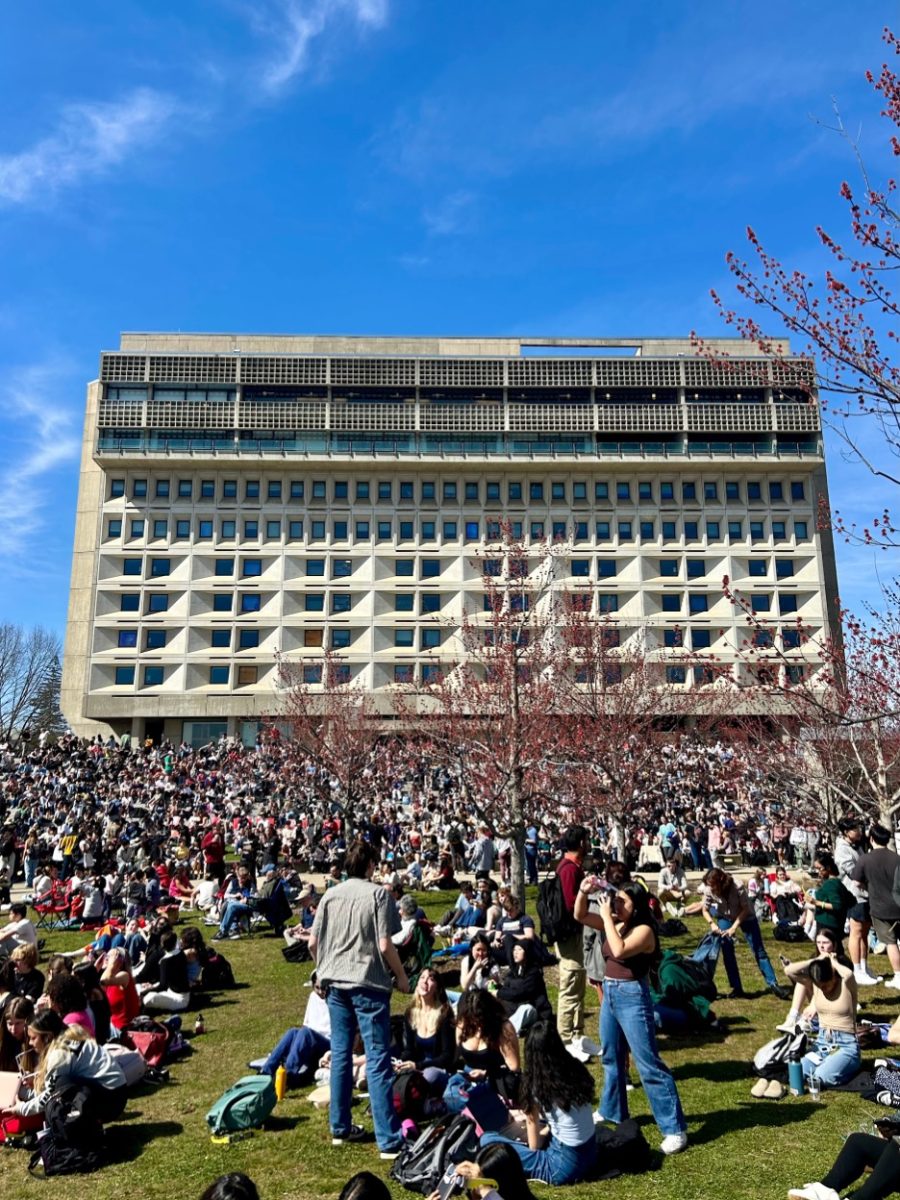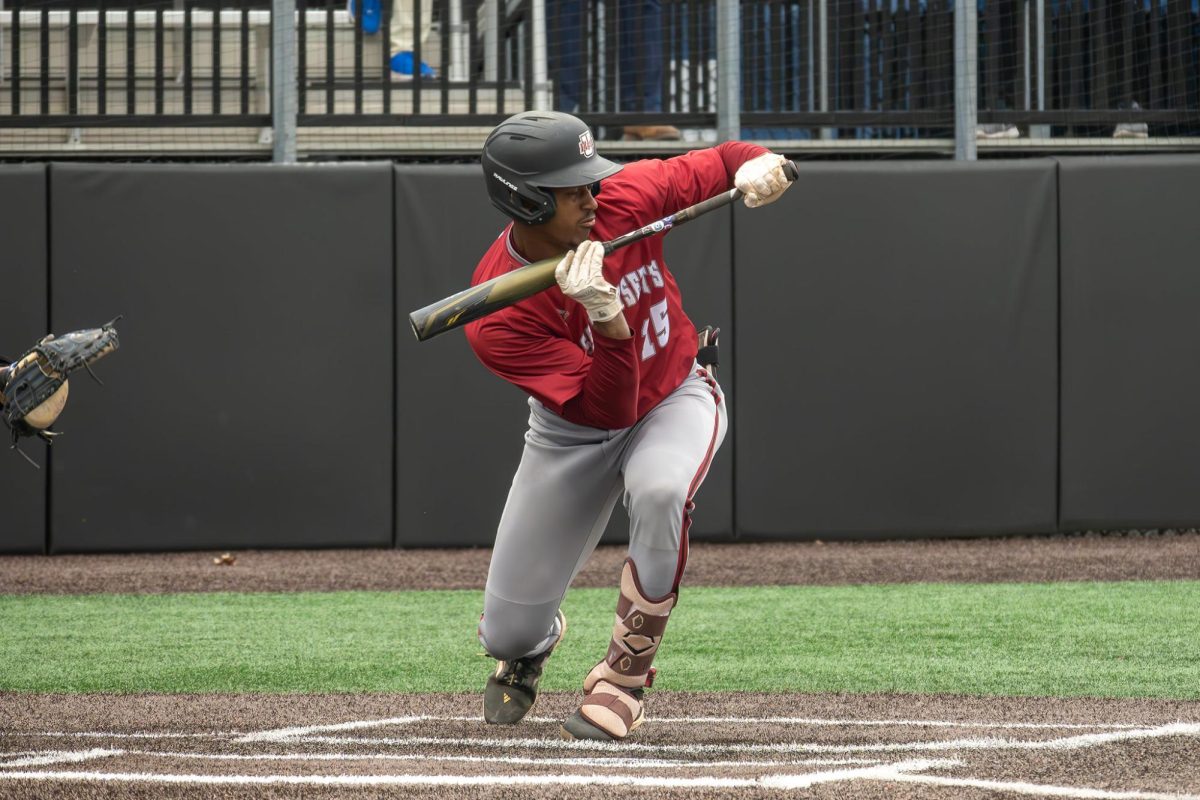
Bethany Bradley, a professor at the University of Massachusetts, explained how rising temperatures, human dispersal and increasing carbon dioxide levels allow invasive species to thrive, speaking to a group of 14 students and faculty members in the Morrill Science Center via a webinar Wednesday afternoon.
Bradley is an associate professor in the department of environmental conservation and co-founded the Northeast Regional Invasive Species and Climate Change (RISCC) management initiative.
Bradley was introduced by Curtice Griffin, professor and head of the department of environmental conservation at UMass. To start her presentation, Bradley briefly explained why people should care about invasive species, explaining how they have negative impacts. She showed a meta-analysis proving invasive terrestrial plants are doing better than native plant and animals, which she later showed are connected to climate change.
Bradley then talked about rising temperatures and their indirect effects on invasive species. Rising temperatures favor aquatic invasive animals, consequently meaning the native species are doing worse; she explained that this is an example of the priority effect, where the invasive species “snag resources and grow big.” She said this was similar to the phrase “the early bird catches the worm.” Similarly, invasive plants have phenotypic plasticity, meaning they respond better to warmer temperatures and emerge earlier in the season.
She gave the example of an experiment botanist Alfred Hosmer conducted where he surveyed 429 flowering species in Concord, Massachusetts, from 1888 to 1902. Students at Boston University recreated this experiment from 2003 to 2007. The students proved species whose flowering times do not respond to temperature have decreased greatly in abundance.
Bradley then talked about how climate change favors the range of invasive species. She referenced a study from 1964 to 2004 that measured forest composition in the Green Mountains. Northern hardwoods expanded upwards in elevation, moving about 600 feet upwards in the span of 40 years as a result of climate change.
Another reason Bradley gave for the strong link between invasive species and climate change is the dispersal of invasive fish and plants by humans. They have a huge advantage above native species because people are cultivating these invasive species and spreading them.
“We are doing an awesome job at moving invasive plants and moving non-native plants all over the world because we like them for ornamental plants,” Bradley said. “We plant them in our yards, we plant them on campus.”
The rising temperatures also favors the range and quantity of forest pests, according to Bradley. Along with invasive pests expanding, the native pests are starting to have longer and more life cycles. She gave the example of mountain pine beetles, emerald ash borers and kudzu.
Bradley then explained how altered climate variability creates novel ecological disturbance. Invasive species also thrive with the increased disturbance because the morality rate of native species increases.
She went on to describe how all plants benefit from higher carbon dioxide (CO2) levels, but invasive species do even better. Increased CO2 levels creates invasive plants that are harder to kill and need higher doses of herbicides. Bradley gave the example of poison ivy, where CO2 makes better conditions for it to grow faster and become more of an allergen.
Bradley explained how this increase of CO2 also poorly impacts aquatic life.
“CO2, when it makes its way into the water…increases the acidity in oceans and water bodies, and our native aquatic animals are doing decidedly worse within those systems,” she said.
Bradley ended her presentation by going over some known facts and unknown details about the future of climate change and species invasion. She explained it is known that ecosystem interactions and cascading effects are hard to predict, but it is unknown what novel invaders will be imported next. It is known the nursery trade brings novel pests and pathogens, but it is unknown what their ranges will expand to.
After 45 minutes, Bradley opened it up to questions from audience members in person and viewers online. Questions asked were about successful cases of eradicating species, the biology of invasive plants and Bradley’s thoughts on assistive migration of native species.
Eve Beaury, a first-year graduate student studying organismic and evolutionary biology, decided to come to the presentation because Bradley is her advisor, and she wanted to hear Bradley talk. Also, as a student studying this topic, she wanted a general overview.
Her favorite part of the presentation were the images of various invasive species that Bradley presented, because Beaury “think[s] the images are very powerful in showing how impactful invasive species are.”
“I think when you hear about it or read about it, maybe you think it is really far removed from how you’re living your life, but when you see an image of kudzu covering someone’s house or you hear a story of poison ivy getting way worse, then that’s something that connects someone,” Beaury said.
Beaury relayed a message of hope and talked about efforts in the Galapagos to remove invasive species.
According to Galapagos Conservancy, Project Isabela was completed in 2006; the project successfully eradicated “feral goats and donkeys from northern Isabela; goats, donkeys, and pigs from Santiago, and goats from Pinta.”
“It’s not hopeless and there are things we can do to help,” Beaury said.
Abigail Charpentier can be reached at [email protected] and followed on Twitter @abigailcharp.



















